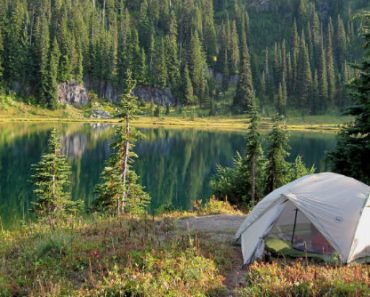
Minor issues may seem important when you are isolated and unprepared at your campsite. In collaboration with Smores and Snores you should be prepared for any malfunctions related to camping with the tips and tricks below.
My gas stove does not turn on
Make sure the gas supply is intact
When your camping stove does not turn, you must first check that you have not run out of gas. Shake the gas cartridge; the more noise it makes, the lighter it is and the less gas inside.
- If there is a lot of gas in the cartridge but it does not reach the burner, tighten all hose connections to eliminate any leaks.
- Still no luck? Disconnect the hose between the cartridge and the burner and check each junction for blockages. Blow strongly through the pipe to remove anything that could block the gas supply. Connect the hose to the connectors and try turning it on again.
I can not light the campfire
Use an improvised fire starter
Unless your firewood is completely dry and you can make your fire out of the wind, it can be very difficult to start a fire. There is a range of materials that you can use to make small wood and thus light the fire:
- Sawdust dipped in candle wax melted and rolled into a ball.
- Plush from the pockets of your clothes.
- Cardboard waxed milk or fruit juice, cut into slices.
- Crumpled pages of an old guide.
- Dry wood chips cut from the core of a stick or branch.
Another working tool is the Firesteel:
- A Firesteel is the most reliable way to light a fire. Unlike matches or a lighter, these metal bars are unaffected by water and can be used to hit an intensely hot spark on your kindling.
There is mold on my camping chair
Refresh it with a stiff brush
If your camping chair was wet when it was stored during the winter, mold could have developed there. This is unsightly and can also destroy the fabric of the chair.
- Use a stiff brush to remove the mildew from the surface, then rub the black stains on the fabric with warm water solution and bleach.
- Allow the bleach solution to soak in the tissue so that all mold spores in the material are destroyed. Rinse with water, then let it air and sun dry.
The needle of my compass is stuck
Remove the static effect
The movement of a compass needle can be affected by static electricity in your clothing. Rub some water on the case of the compass to disperse the electric charge. This should release the needle.
My binoculars are foggy
Dry them to remove condensation
The condensation inside your binocular lenses can not be wiped off and, if ignored, it can lead to mold – a problem much more difficult to solve.
- Put your binoculars in a warm, dry place for a day or two. This should evaporate any condensation.
- Alternatively, put the binoculars in a large sealed storage food container or in a freezer bag with a few cups of rice or a desiccant such as silica gel crystals (available at photo shops).
Make your binoculars last
Delicate fingering and appropriate treatment
- Put lens caps on your binoculars when you’re not using them. This keeps the dust out of the lenses and protects them from scratches.
- Avoid touching lenses because your fingers will leave greasy prints difficult to clean. To remove fingerprints, rub the lenses very gently with a special optical cleaning solution and lens cleaning paper.
- Use a camera cleaner with a soft brush and an air blower to blow off lens dust – never wipe with a tissue because you may scratch the surface.

